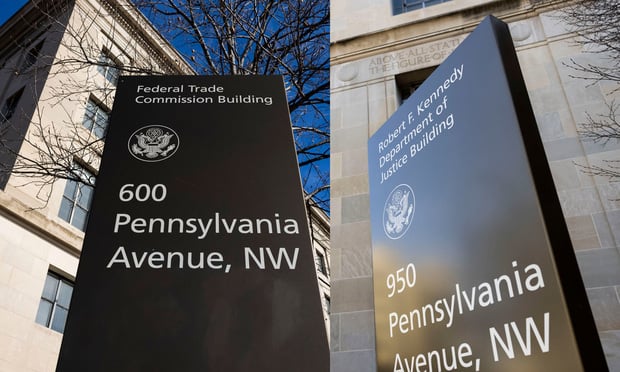Both Democrat Hillary Clinton and Republican Donald Trump havesaid they would work to get Americans a raise if they win the WhiteHouse. Simple demographics are a reason forskepticism.
|Related: Perks trail solid salaries and benefits withemployers
|Population aging is dragging down overall wages, researchfrom the Federal Reserve Bank of New York shows. That'sthe top story in this week's research wrap, which also looksat the influence of economic conditions on mortality, wagedynamics by firm size and inflation overshoot. Check back everyTuesday for a guide to interesting or impactful economicresearch released in the prior week.
|When politicians talk up higher wages
...know that they'll be working against demography. Theaggregate real-wage growth rate peaked in the mid-1980s ataround 1.8 percent, New York Fed researchers find. They look atwhat they call a "cyclically neutral" wage growth rate: the onethat would occur over time in a labor market that's neitherespecially tight nor especially loose.
|Related: Is the racial wage gap gettingworse?
|Since the '80's, the U.S. adult population has aged, which slowsoverall pay growth because workers see faster gains earlier intheir careers, and eases labor productivity gains sincecareer-related learning is "front-loaded." The trend hashelped to cut the cyclically neutral real-wage growthrate by about a third, to around 1.2 percent.
|And America isn't getting any younger. "The aging of the U.S.population will continue to act as a headwind to laborproductivity and wage growth," authors Robert Rich, JosephTracy and Ellen Fu write.
|Economic booms can kill you
No kidding. While major economicbooms improve adult outcomes, mortality actuallyincreases after smaller ones. Pollution is the major cause, thoughincreased alcohol consumption also plays a role. That'sparticularly true in Russia, "where binge drinking is relativelycommon."
|It's a different story for kids. People who experience boomsduring adolescence actually have better outcomes, ending up with"more satisfying lives, better social connections and improvedmental health and cognitive abilities" despite the increasedpollution spurred by expansion-era production.
|When it comes to tight labor markets and pay, firm sizematters
Tight labor markets won't be the game-changer that gets youget a raise if you're working full-time for abig company, based on a study of employees in Japan.Smaller companies react more to labor-market conditions,while people working at large Japanese firms mostly see fatterpaychecks based on changes in inflation and union negotiations.
|Related: Companies complacent about new wage and hour rules,survey shows
|Why the difference? It may be that people change jobsmore in the small- and medium-enterprise labor market, makingit more likely that those firms "face the risk of being unable tosustain employees."
|The base salary of part-time workers, meanwhile, is determinedby labor-market tightness and minimum-wage increases. The studylooks at base pay, not bonuses.
|The case for central bank inflation overshoot might havegrown
Olivier Blanchard, the former International Monetary Fundresearch department director, makes the case for higherinflation targets in the U.S., Japan and Europe. The pieceis more opinion than research but earns a spot onthis list because it's a concise summary of an agenda-settingdebate in global economics.
|Blanchard says "there is a strong argument that all three shouldaccept and engineer higher inflation," albeit for differentreasons. In the U.S., doing so would provide insurance againstrecession, because it would give the Fed more room to cut realrates in a downturn. In the euro area, Germany in particular couldlet its inflation exceed 2 percent to allow deficit countries tore-establish competitiveness without resorting to deflation. And inJapan, a higher rate of inflation coupled with low nominal ratescould allow for a gradual reduction in debt to a sustainablelevel.
|Obvious question: How would these countries get higherinflation, in a world where they're struggling to hit their 2percent targets? Blanchard suggests a coordinated increase in wagesand prices, which is theoretically plausible but probably a heavylift, practically speaking.
|Rain, snow and payrolls
Shoddy May U.S. payroll data might have had a lot to do withweather, based on a new San Francisco Fed economic letter. Lookingat real-time weather data along with a model that uses monthlycounty employment data, the authors conclude that the country wouldhave added 196,000 jobs in May, counting out the effects of badweather and a Verizon strike, versus the 24,000 reported for themonth.
|"May employment growth appeared to be hampered by a kind ofdouble whammy: May’s economic activity was held down by anunusual cold spell, and the warm February and March temperaturespulled some employment forward that normally would haveoccurred in May," the authors write.
|Copyright 2018 Bloomberg. All rightsreserved. This material may not be published, broadcast, rewritten,or redistributed.
Complete your profile to continue reading and get FREE access to BenefitsPRO, part of your ALM digital membership.
Your access to unlimited BenefitsPRO content isn’t changing.
Once you are an ALM digital member, you’ll receive:
- Critical BenefitsPRO information including cutting edge post-reform success strategies, access to educational webcasts and videos, resources from industry leaders, and informative Newsletters.
- Exclusive discounts on ALM, BenefitsPRO magazine and BenefitsPRO.com events
- Access to other award-winning ALM websites including ThinkAdvisor.com and Law.com
Already have an account? Sign In
© 2024 ALM Global, LLC, All Rights Reserved. Request academic re-use from www.copyright.com. All other uses, submit a request to [email protected]. For more information visit Asset & Logo Licensing.








